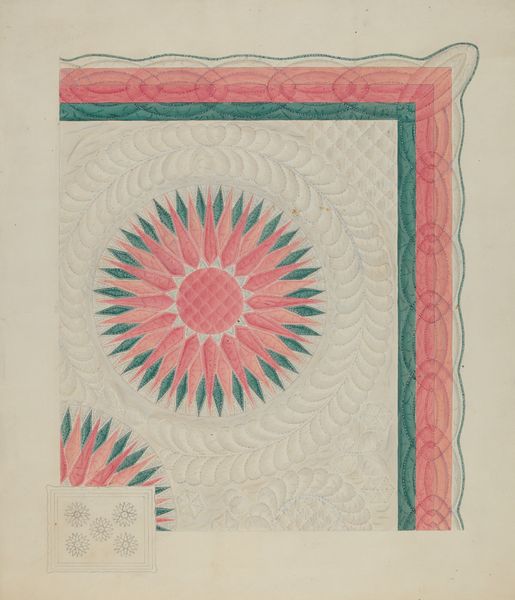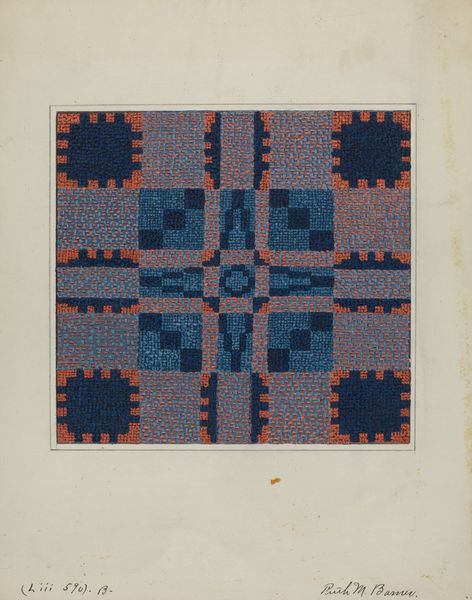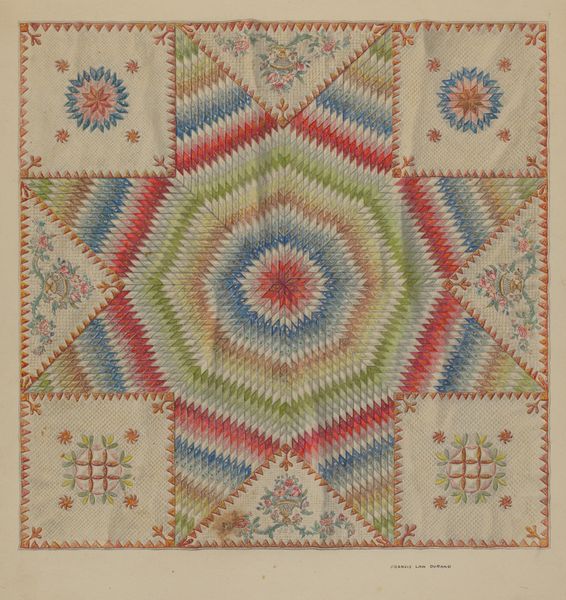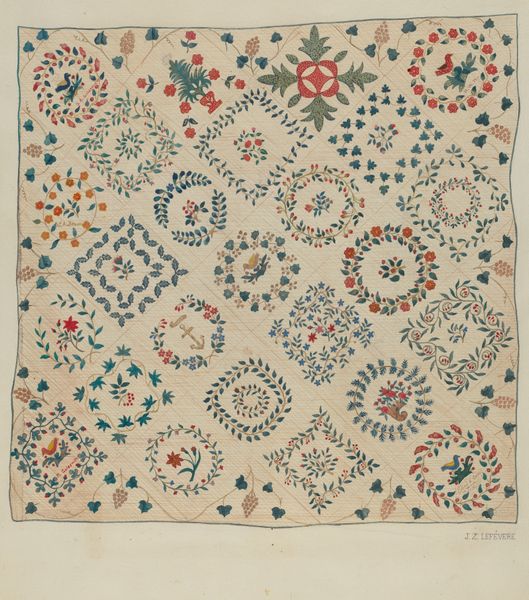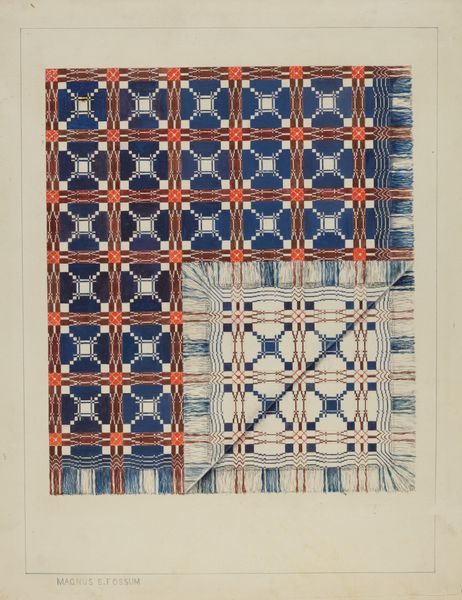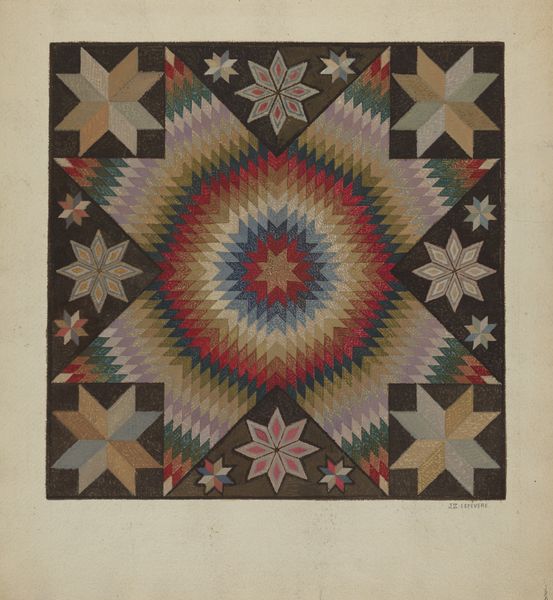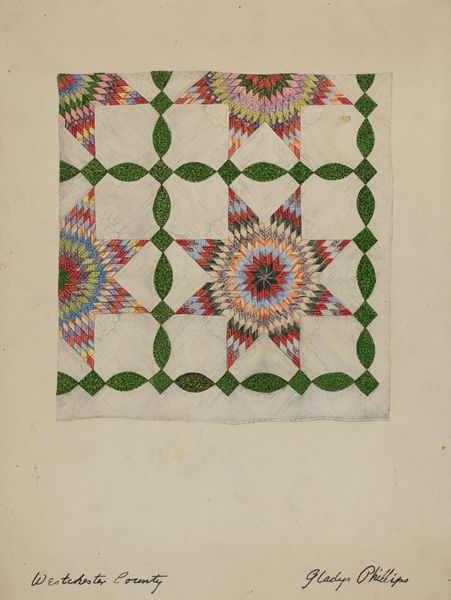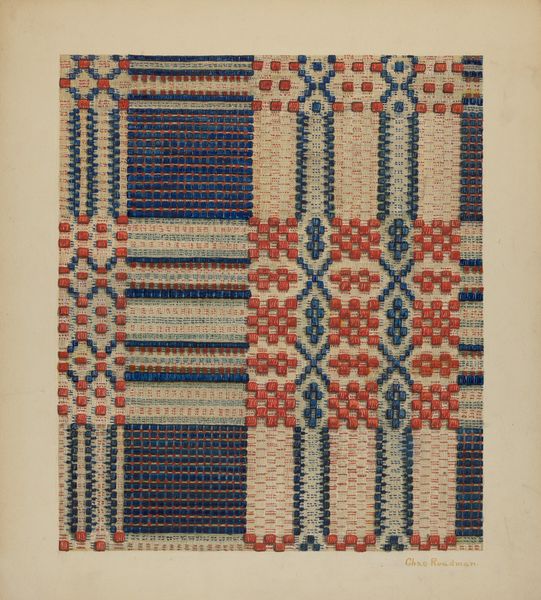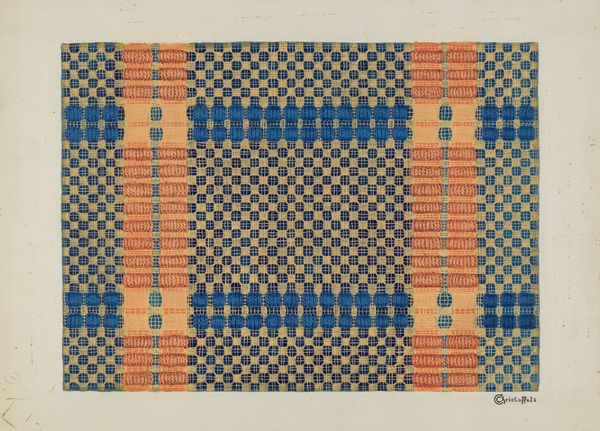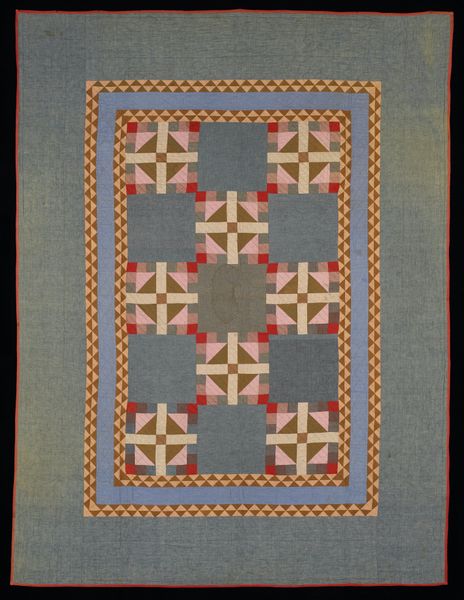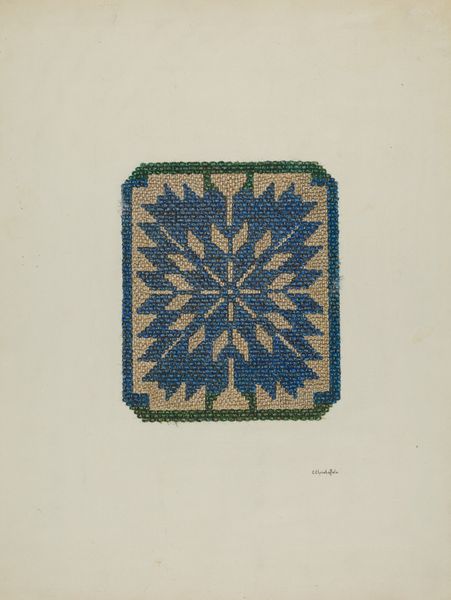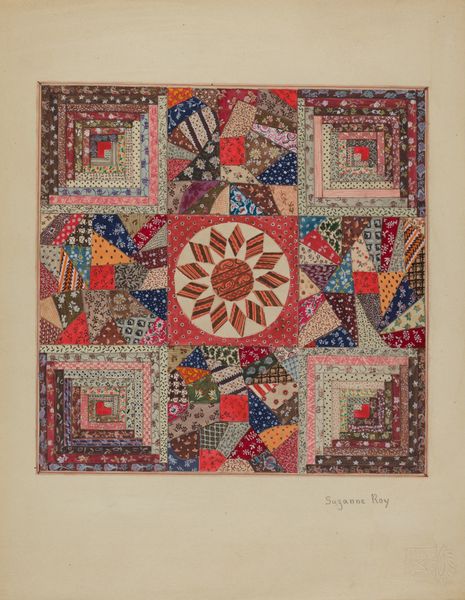
drawing, textile, watercolor
#
drawing
#
water colours
#
pattern
#
textile
#
watercolor
#
folk-art
#
decorative-art
#
watercolor
Dimensions: overall: 35.6 x 29.2 cm (14 x 11 1/2 in.) Original IAD Object: 41"square
Copyright: National Gallery of Art: CC0 1.0
Curator: Here we have Francis Law Durand’s “Infant's Quilt (Bed Covering)” from about 1937. It seems to be a watercolor drawing of a quilt design. Editor: It’s…restrained. The pastel palette, those simple geometric shapes. It gives a feeling of gentle domesticity, of course, but almost bordering on…austere, perhaps due to the medium it's executed in, watercolor. Curator: The interesting thing is the context of quilt-making itself. It was often a communal activity, particularly for women, providing both practical warmth and a space for social and creative expression. Do you think this watercolor design might represent a shift away from communal creation? Editor: That's where the materiality becomes key. We’re looking at a watercolor depicting a textile. A real quilt involves labor, collaboration, access to fabrics, all kinds of material realities. This is… an idea of a quilt, filtered through a single hand. What’s absent is all the physical effort, the accumulation of fabric scraps and stories that a "real" quilt embodies. Curator: It becomes less about function and more about the ideal, then? Was Durand trying to elevate quilt-making to the realm of "fine art" through rendering it in watercolor? What's gained and what's lost in that translation? Editor: Perhaps. The rendering is careful, almost technical, and the hand-drawn quilting pattern is really interesting. It abstracts the concept, emphasizing design and form. This rendering focuses on a singular, pristine vision rather than the imperfect beauty of hand-sewn imperfections. I see it more as an archival impulse than a gesture toward the high-art world. A material study that becomes, instead, purely visual. Curator: It certainly encourages us to consider the shifting roles and perceptions of craft, design, and artistic creation within social history. It asks questions about cultural value, artistic hierarchies, and who gets to define them. Editor: Indeed. By extracting the idea of the quilt from its laborious context, we can see it asks questions of production. Not of production completed but only imagined. A space to think on how process changes our perceptions.
Comments
No comments
Be the first to comment and join the conversation on the ultimate creative platform.
